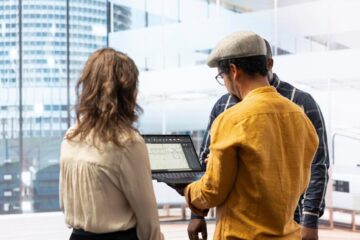Playground Equipment Welding: Ensuring Safety, Durability, and Fun

Playgrounds are essential spaces for children to explore, exercise, and socialize, with equipment like swing sets, slides, and climbing structures providing countless hours of entertainment.
These pieces of playground equipment endure heavy use and exposure to the elements, so ensuring their structural integrity and safety is a priority. One of the key processes that contributes to building and maintaining these structures is welding.
Playground equipment welding not only ensures a safe environment for children but also guarantees the longevity and strength of the equipment.
The Role of Welding in Playground Equipment
Welding is a process that involves joining materials, typically metals, by using high heat to melt the workpieces and allowing them to cool, forming a strong bond. In the context of playground equipment, metal welding is used for both the construction of new structures and the repair of existing ones. It is especially important for large and complex pieces such as swings, slides, and climbing structures, where structural integrity is paramount.
Types of Playground Equipment That Require Welding
1. Swing Sets
Swing sets are a classic playground feature, providing fun and exercise for children. The metal frame of a swing set is usually constructed from steel or aluminum, as these materials are strong enough to support the weight and motion of swinging. Welding is used to join the vertical poles, crossbars, and connecting pieces, ensuring the frame can withstand the pressure exerted by both the swings and the children using them. Welds must be smooth and precise to prevent any sharp edges or weak points that could lead to accidents.
2. Slides
Slides, another staple of playgrounds, are typically made from a combination of metal frames and plastic sliding surfaces. The frame, often made from steel or stainless steel, provides support and stability, while the plastic surface ensures a smooth, safe sliding experience. Welding is crucial in assembling the frame and ensuring that all connections are secure. Given the heavy usage and frequent impact as children climb and slide down, welds must be strong enough to avoid any loosening or damage over time.
3. Climbing Structures
Climbing structures, such as jungle gyms, monkey bars, and climbing walls, are among the most complex and heavily used playground equipment. These structures are typically built from a combination of steel, stainless steel, and sometimes reinforced plastic, and are designed to support the weight and activity of multiple children. Welding is used extensively to join the vertical and horizontal components, such as bars, ladders, and climbing elements. The quality of welding is critical to the safety of these structures, as a single weak weld could compromise the entire framework.
Welding Materials for Playground Equipment
Different types of metals are used in playground equipment, and the choice of material impacts the type of welding required:
- Steel: The most common metal used for playground frames due to its strength and cost-effectiveness. Steel can be welded using a variety of techniques, including MIG (Metal Inert Gas) and TIG (Tungsten Inert Gas) welding.
- Stainless Steel: This corrosion-resistant material is often chosen for its durability and aesthetic appeal, especially in outdoor playgrounds where rust and weathering are concerns. Stainless steel requires specialized TIG welding to maintain its integrity and appearance.
- Aluminum: Known for being lightweight and resistant to corrosion, aluminum is often used for certain components of playground equipment. While welding aluminum can be more challenging, advanced MIG or TIG welding techniques can ensure strong, durable joints.
- Cast Iron: Though less common in modern playground equipment, cast iron may still be used in some older designs or decorative elements. Welding cast iron requires specific techniques and expertise to avoid cracking and ensure a secure bond.
Safety Considerations for Playground Equipment Welding
Since playground equipment is designed for children, safety is the most critical factor when welding these structures. Several important factors must be considered during the welding process:
- No Sharp Edges: Welds should be smooth and free from sharp edges or spatter that could cause injury. After welding, the joints are often ground down to ensure a smooth surface.
- Strength and Durability: Welds must be strong enough to support the weight and activity levels of children, as well as any environmental stresses (like wind or rain). Quality assurance checks are essential to verify the strength of the welds before equipment is installed.
- Corrosion Resistance: Given the exposure to the elements, especially in outdoor playgrounds, corrosion-resistant materials and coatings are essential. Stainless steel, galvanized steel, and powder-coated finishes are often used to prevent rust and deterioration.
- Inspection and Maintenance: Regular inspections are needed to ensure the welded joints remain intact and secure over time.
Repairing Playground Equipment with Welding
Welding is also an essential tool for repairing damaged or worn-out playground equipment. Over time, exposure to the elements, rough play, and general wear can cause parts of the equipment to weaken or break. Welding can restore the strength and functionality of the equipment, allowing playgrounds to remain safe and usable without the need for costly replacements.
In repair work, it’s important to:
Follow Safety Standards: Adhere to local safety regulations and guidelines to ensure the repaired equipment meets all safety criteria.
Assess the Damage: Carefully inspect the equipment to identify the areas that need attention.
Use Appropriate Materials: Ensure the right welding materials are used to match the original structure (e.g., stainless steel, steel, or aluminum).














